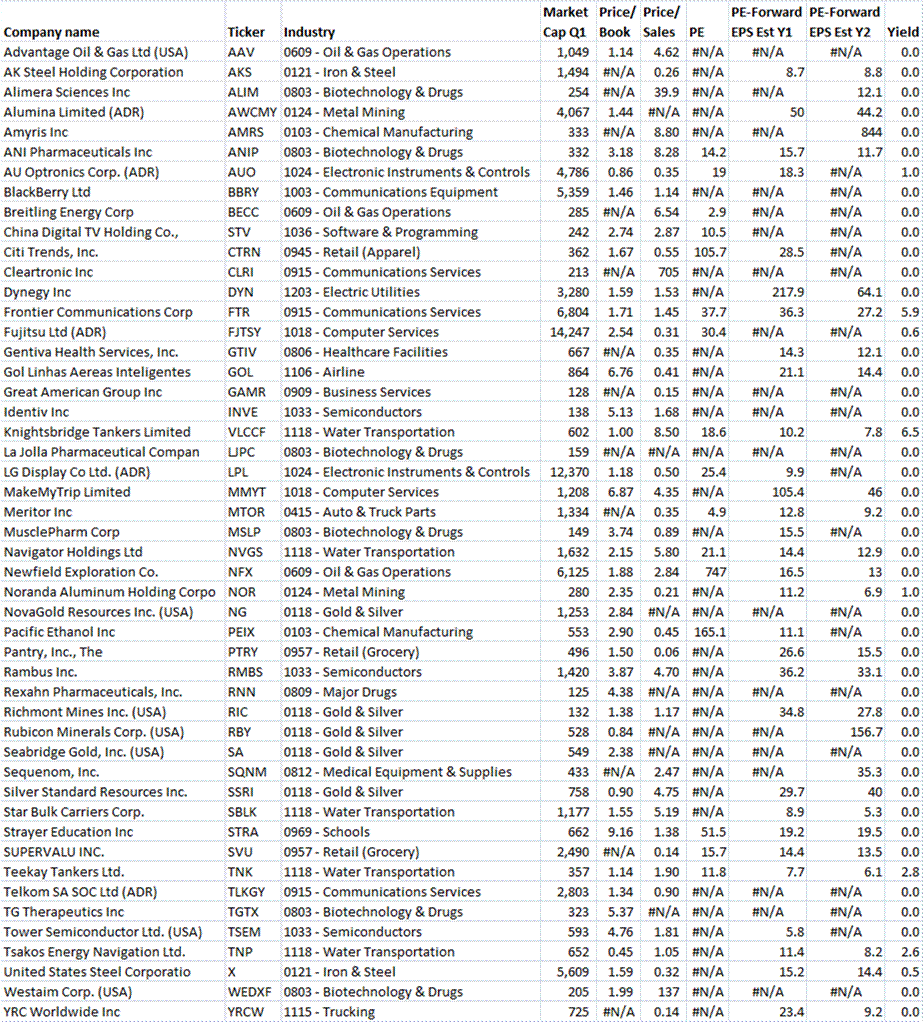
One of the challenges of fundamental investing is trying to find decent ideas that are off the radar. There are a number of ways to try to do that by looking at:
- smaller foreign companies
- companies that have made some significant losses.
- companies where the relative performance is so awful that no?manager benchmarked to an index would dare touch the company.
- small companies with modest?insider buying.
- companies in boring industries that you know can’t have any significant growth. ?(This excludes “buggy whip” industries.)
- companies where insiders own so much of the company, that it can’t easily be taken over.
- complex companies that are difficult to understand.
Okay, tall order. ?That said, I’ll do a few articles over the next two months that try to unearth companies that might be suitable candidates for analysis. ?Tonight’s article follows up on what I wrote in my last article, where I said:
Sometimes I like to run a screen for?stocks have done badly over the last four years, but have begun to outperform over the last year. ?This can point out areas that are still ignored by most of the market, but where trend may have shifted. ?I?ll post that screen after my software has its weekly update on Saturday.
I’m going to show you the list, with some additional data to give some context, but remember this: the only reason these stocks are here is that they underperformed the market massively for the last four years, and have had a turn in performance in the last year. ?Anyway, here is the list:
I’ve been analyzing stocks for over 20 years… out of the 49 companies listed here, I recognize 24 of them. ?I own none of them at present, though I have owned four?of them in the past [AKS, DYN, TNP & YRCW]. ?That said, four years of lousy relative performance likely means that few are actively looking at these companies.
As with any analysis on the internet, purchasing or selling shares of companies like this is?at your own risk. ?I’m planning on looking through this list for ideas, and if I find one good enough to buy for my clients and me, I will do a write-up after we have established our position.
In order to get there, I would have to be satisfied about a number of things regarding any one of these companies:
- What went wrong over the last four years?
- Has management fixed what was wrong? ?(Or, is there a new management with better ideas?)
- Is the business adequately capitalized?
- Is the accounting likely honest/conservative?
- Do they have a?large?area where they can earn money sustainably, or are they up against stronger competition almost everywhere?
- If they are in a tough industry, are they one of the few that could survive if conditions got markedly worse?
- Does management seem intelligent in using excess cash?
The question is to look for a margin of safety, and then see whether the company will earn a return on its business that is attractive at your entry price. ?This is a challenge, but maybe one or two companies out of 49 could make it.
Or not. ?Be careful.


3 thoughts on “Using Mean Reversion and Momentum for Possible Advantage”